
Entering the Swiss market for cocoa
Opportunities for premium chocolates made from speciality and certified cocoa are growing significantly in Switzerland. The Swiss market for fair-trade and organic products is especially large compared to other countries. Given the widespread availability of certified chocolates in Switzerland, certification may be a key entry requirement for cocoa exporters in most Swiss market segments.
Contents of this page
1. What requirements and certification must cocoa comply with to be allowed on the Swiss market?
Switzerland is not a member of the European Union (EU), but a member of the European Free Trade Association (EFTA). To facilitate free trade with the EU, to a large extent, Switzerland has adapted its food laws to European law. Hence, they are based on EU legislation. For a complete overview of EU requirements, refer to our study on buyer requirements for cocoa or consult the specific requirements of the Swiss Federal Food Safety and Veterinary Office.
Buyer requirements can be divided into the following:
- Legal and non-legal requirements you must comply with.
- Additional requirements to keep up with the market.
- Requirements for niche markets.
The highlights for these requirements are given below, specified for the Swiss market when relevant.
Legal and non-legal requirements you must comply with
Legal requirements
You must follow the European Union legal requirements for cocoa, mainly dealing with food safety and hygiene. Related to this are the legal limits for food contaminants, of which the most common are:
- Pesticides (consult the EU pesticide database or the Swiss pesticide database for an overview of the maximum residue levels (MRLs) for each pesticide)
- Mycotoxins (ochratoxin A is of special relevance for cocoa)
- Polycyclic-aromatic hydrocarbons (PAHs)
- Microbiological contamination such as salmonella (although cocoa is considered low-risk)
- Heavy metals such as cadmium (which is a particular problem for cocoa from some Latin American countries due to factors like volcanic activity and forest fires).
Quality requirements
If you want to access the Swiss market for cocoa beans, you will have to meet your buyer’s quality standards. These are particularly high within the speciality segment for fine-flavour cocoa beans.
Buyers in Switzerland and elsewhere currently assess the quality and flavour of cocoa beans in different ways and often use a combination of two or more methodologies. The guide Cocoa Beans: Chocolate & Cocoa Industry Quality Requirements provides recommendations on cocoa growing, post-harvest practices and quality evaluation methods that contribute to cocoa quality.
Other common cocoa quality assessment methodologies and international cocoa standards used among chocolate makers and cocoa traders include the following:
- ISO’s Standards on classification and sampling for cocoa beans.
- The Fine Cacao and Chocolate Institute (FCCI): check its website and contact FCCI for its sampling protocol and grading form.
- Heirloom Cacao Preservation’s genetic evaluation of cocoa to identify and value cocoa and its flavour.
- Equal Exchange/TCHO’s quality assessment and tasting guide to assess the quality of cocoa along the value chain.
In addition, a working group of the Cocoa of Excellence Programme, which is co-ordinated by The Alliance of Bioversity International and CIAT, has launched the International Standards for the Assessment of Cocoa Quality and Flavour website. Here you can download the protocols on the quality standards.
These protocols describe step by step how to: 1) sample cocoa beans for evaluation; 2) assess their physical quality; 3) process them into coarse powder, liquor and chocolate; and 4) establish a sensory evaluation of the flavours expressed in these three products.
Labelling requirements
The information provided by labels must be easy to understand, easily visible, clearly readable and written in a language easily understood by the purchaser. That is usually English.
The label should include the following topics to ensure traceability of individual batches:
- Product name
- Grade
- Lot or batch code
- Country of origin
- Net weight in kilograms
If your cocoa is organic and/or fair-trade certified, the label should contain the name/code of the inspection body and certification number.
Figure 1: An example of cocoa bean labelling
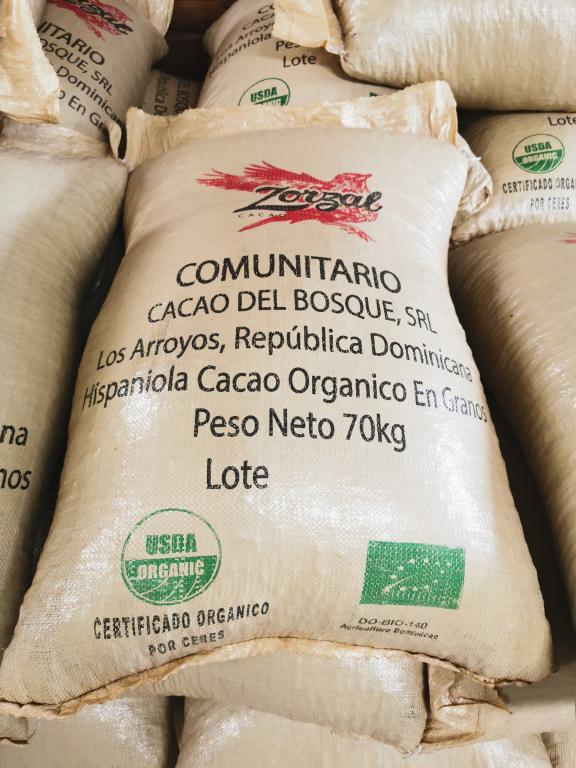
Source: Zorzal / Credit: Gustavo Ferro
Packaging requirements
Cocoa beans are traditionally shipped in jute bags, which can weigh between 60 and 65 kilograms. On the mainstream market, bulk shipment of cocoa beans has become more popular. This means cocoa beans are loaded directly into the ship’s cargo hold or in shipping containers containing a flexi-bag (see figure 2). This mega bulk method is often adopted by larger cocoa processors, which handle cocoa beans of standard qualities.
In the speciality cocoa segment, jute bags are still commonly used. For very high-quality micro lots, vacuum-sealed GrainPro packaging can be used.
Figure 2: Examples of packaging for cocoa: jute bag, container-sized flexi bag and GrainPro

Sources: Osu.edu, Bls.bulk.com and GrainPro
Tips:
- Activate the “Translation” function of your browser to make the studies available in your native language.
- For the full buyer requirements, read our study on buyer requirements for cocoa in Europe.
- Check the website of EURO-Lex for more detailed information about the regulations concerning cocoa products.
- Read more about the quality requirements of the European industry for cocoa beans on the Cocoa Quality website.
- Learn more about maintaining the quality of your cocoa during transportation on the website of the Transportation Information Service.
- Read more about delivery and payment terms for your cocoa-bean exports in our study Organising your cocoa exports to Europe.
Additional requirements to keep up with the market
Additional food safety requirements
You can expect buyers in Switzerland to request extra food safety guarantees from you. Regarding production and handling processes you should consider the following.
- Implementation of good agricultural practices (GAPs): The main standard for good agricultural practices is provided by GLOBALG.A.P. This is a voluntary standard for the certification of agricultural production processes that provide safe and traceable products. Note that certification organisations (such as Rainforest Alliance/UTZ) often incorporate GAP in their standards.
- Implementation of a quality management system (QMS): A system based on Hazard analysis and critical control points (HACCP) is often a minimum standard required at the level of storage and handling of cocoa beans. If you export semi-finished cocoa products, some buyers will also expect you to have certification, such as International Featured Standards: Food (IFS), Food Safety System Certification (FSSC 22000) or British Retail Consortium Global Standards (BRCGS) certificates, for your manufacturing facilities.
Additional sustainability requirements
Corporate responsibility and sustainability are becoming increasingly important in the European and Swiss cocoa sector. It is essential to adopt codes of conduct or sustainability policies related to environmental and social impacts. Leading companies on the Swiss chocolate market (such as Lindt & Sprüngli and Chocolats Halba) have sustainability policies emphasising the contact with producers, transparency in their operations, as well their social and environmental impact.
As an exporter, adopting codes of conduct or sustainability policies related to your company’s environmental and social impacts may give you a competitive advantage. In general, it is likely that buyers will require you to comply with their code of conduct and/or fill out supplier questionnaires about your sustainability practices.
Certification standard Rainforest Alliance/UTZ is less popular in Switzerland than in other European markets such as the Netherlands. This is mainly due to the Swiss market proposition of sustainability which is geared more towards organic and/or fair-trade certification. Still, about 60 traders, cocoa processors and chocolate manufacturers operating in Switzerland are Rainforest Alliance/UTZ-certified.
Apart from these sustainability requirements, it is important to be aware that the EU is implementing its so-called European Green Deal. It aims to make Europe sustainable and climate neutral by 2050. To achieve this goal, the EU is working on legislation that requires companies to address human rights and environmental standards in their value chains; that includes firms trading in cocoa. As with corporate codes of conduct, companies will expect you to comply with these additional requirements. The EU is working on a European due diligence solution to stop EU-driven deforestation, too, which also covers cocoa cultivation. Switzerland shares many of the sustainable development goals contained in the European Green Deal roadmap, in particular the stance of taking a leading role in the fight against climate change. In their respective sustainability, environmental, energy and climate policies, Switzerland and the EU have set themselves largely equivalent levels of ambition.
Tips:
- Refer to the International Trade Centre Standards Map or the Global Food Safety Initiative website to learn about the different food safety management systems, hygiene standards and certification schemes.
- Find out which standards or certifications are preferred by potential buyers in your target segment. Buyers may have preferences for a certain food safety management system or sustainability label depending on their end clients and/or distribution channels.
- Carry out a self-assessment to measure how sustainable your production practices are. You can fill out this online self-assessment form by Amfori BSCI to assess your social performance. This Excel form by the Sustainable Agriculture Initiative (SAI) Platform can be used to assess the sustainability performance of your farm.
- See our study on certified cocoa for more information about the demand for sustainable cocoa on the European market, trends and specific trade channels.
Niche requirements
Organic
Switzerland represents an important market for organic-certified cocoa products in Europe. In order to market your cocoa as organic in Switzerland, it must comply with the regulations of the Swiss Organic Law.
A mandatory national logo for organic products does not exist in Switzerland. However, the private label of Bio Suisse, the Swiss private organic sector association, is widely used. Note that the standards of this label are stricter with regard to agricultural production and processing than the Swiss Organic Law, or EU Organic regulation. Retailer Coop, the largest seller of organic food in Switzerland, only accepts organic products from this standard. Other organic standards used in Switzerland are Demeter and Migros Bio, the private organic label of retailer Migros. Each scheme has its own requirements, and may be required by specific buyers.
Fair trade
The market for fair-trade cocoa is also large in Switzerland, offering interesting opportunities in this niche market. Common fair-trade standards on the Swiss market include Fairtrade, for which the accredited certifier is FLOCERT, and Fair for Life.
Fair for Life certification was developed by the Swiss Bio-Foundation and the Institute for Marketecology (IMO), and is now universally applicable regardless of setting and location. But keep in mind that Fair for Life may be lesser known in the marketplace. This certification standard does have the advantage of being cheaper than some others, as the control body may combine the fair-trade audit with the organic or Rainforest Alliance audit. However, you should always check demand for and interest in a specific certification with your (potential) buyer. It is also recommended that you check what kind of a premium will be paid, as this is not regulated, unlike Fairtrade’s minimum price.
Tips:
- Learn more about organic farming and European organic guidelines on the European Union website and the Organic Export Info website.
- Familiarise yourself with the range of organisations and initiatives that offer technical support to help you convert to organic farming. Start your search with the organic movement in your own country and ask if it has its own support programmes or knows about existing initiatives. Refer to the database of affiliates of IFOAM Organics to search for organic organisations in your country.
- Find companies that specialise in organic products on the website of Organic-bio.
- Visit trade fairs for organic products, like Biofach in Germany. Check out their website for a list of exhibitors, seminars and other events at this trade fair.
- If you produce cocoa according to a fair-trade scheme, find a specialised Swiss buyer who is familiar with sustainable and/or fair-trade products, for instance through using the FLOCERT customer database.
- Try to combine audits if you have more than one certification. This can save time and money. Also investigate the possibilities for group certification with other producers and exporters in your region.
2. Through which channels can you put cocoa on the Swiss market?
Cocoa beans and cocoa products are used for processing in four different industries: confectionery, food, cosmetics and pharmaceuticals. This document focuses only on confectionery, as it is the main segment for cocoa beans. The confectionery industry mainly processes cocoa liquor and butter into chocolate products, such as chocolate bars, candy bars and bonbons.
How is the end market segmented?
The confectionery industry can be segmented according to the quality of the end products. For cocoa beans, the end products mainly consist of chocolate bars.
Figure 3: Segmentation of the chocolate market based on quality

Source: ProFound
In Switzerland, supermarkets are the main sales channel for chocolate products; they stock a wide variety, ranging from low-end to higher-end products. Supermarkets also sell a wide range of own-label chocolate products. These are popular as they offer the same characteristics as branded products, but usually at more affordable prices. The total share of private label products in Swiss retail reached almost 50% in 2021. The largest supermarkets in Switzerland are:
- Coop (part of The Coop Group, Switzerland);
- Migros (Federation of Migros Co-operatives, Switzerland);
- Denner (Federation of Migros Co-operatives, Switzerland).
Low end: The low-end segment offers cheap cholate products, with lower cocoa content. The products are often produced by large chocolate manufacturers, using mainly bulk cocoa from West Africa (Forastero variety). Bulk cocoa is characterised by high volumes, low value and standard quality. Rainforest Alliance/UTZ-certified cocoa has become mainstream and is often used to certify low-end products. In Switzerland, it is also common to find some chocolate products in this segment carrying an organic and/or fair-trade certification.
Many chocolate manufacturers use mass balance sourcing for their cocoa, meaning that Rainforest Alliance-certified cocoa and non-certified cocoa are mixed during shipping and manufacturing. As a consequence, certified cocoa may end up in non-certified products, or the other way around. Still, the volumes of certified cocoa that are sourced by a certain company will match the number of chocolate products that carry the Rainforest Alliance logo. The mainstream/lower-end chocolate products found on the Swiss market are usually mass-market products from big brands and lower-quality private label products from supermarkets.
Below are some examples of lower-end chocolate brands found in Swiss supermarkets, with an indication of their consumer prices (based on Coop’s retail prices in 2022):
| Product | Image* | Price** (€/kg) | |
|---|---|---|---|
| Lower end | COOP Naturaplan (organic Fairtrade dark chocolate, 100 grams) | 
| 18.73 |
| Cailler (dark chocolate 64%, 100 grams) | 
| 22.10 | |
| Halba (Fairtrade dark chocolate 72%, 100 grams) | 
| 17.29 |
*Source: Coop
**Note that the cost of living in Switzerland is generally higher than in other European countries, resulting in higher retail prices.
Middle range: The middle-range segment includes chocolate products of good quality, which are commonly sustainably certified. Storytelling and the origin of the cocoa beans are important in this segment, mainly for marketing purposes.
Middle-range products are mainly sold through supermarkets and are usually the high-quality category for these retailers. Supermarkets are increasingly offering their own premium private label chocolate products. These offer much the same quality and characteristics as branded chocolates, but their prices are usually more competitive. Besides mainstream supermarkets, middle-range products can also be found in more specialised shops such as Farmy (an online outlet for organic products).
The table below gives some examples of middle-range products available in Switzerland, with an indication of their consumer prices (based on COOP’s retail prices in 2022).
| Product | Image* | Price (€/kg) | |
|---|---|---|---|
| Mid-range | Lindt Excellence (dark chocolate, 85%, 100 grams) | 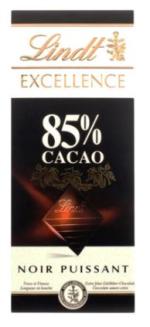
| 28.34 |
| Amarrú (organic Fairtrade dark chocolate, 71%, 100 grams) | 
| 32.66 | |
| Munz (organic Fairtrade dark chocolate, 85%, 100 grams) | 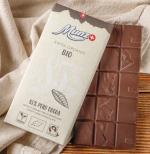
| 37.47 |
High end: Smaller, more specialised chocolate makers produce high-end chocolate products, mainly using fine-flavour cocoa (usually Criollo, Trinitario and/or, to a lesser extent, Forastero). These products are characterised by a high cocoa content. Single origin of the cocoa beans is important, both for the taste as the traceability of the cocoa. Single origin means that the buyer knows exactly where their cocoa beans are from and that it is a specific cocoa rather than a blend. Bean-to-bar chocolate is a good example of a high-end product.
High-end products are mainly sold at chocolate events, at trade fairs and in specialist shops. Choba, La Flor, Orfeve, Sadé Chocolat and Taucherli are examples of Swiss bean-to-bar makers. Examples of other speciality chocolatiers in Switzerland are Max Chocolatier and Teuscher. An example of a speciality web shop is Chocolats du Monde.
Some examples of high-end chocolate products, with an indication of their consumer prices (based on Chocolats du Monde retail prices), are shown below.
| Product | Image* | Price (€/kg) | |
|---|---|---|---|
| High end | La Flor (dark chocolate, Ecuador) | 
| 128.57 |
| Esterre 80, Orfeve (dark chocolate, bean-to-bar) | 
| 142.80 | |
| Mashpi (organic dark chocolate, Ecuador, 80%) | 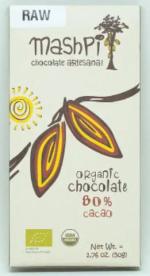
| 180.00 |
*Source: Chocolats du Monde
For exporters, it is important to realise that trade and retail prices for chocolates are not always directly linked. As the figure below shows, depending on the end product in which cocoa beans will be used, between 7.3% and 11% of the added value goes to farmers. In general, cocoa-bean export prices, and the share kept by cocoa producers, will depend on the cocoa beans’ quality, the size of the lot and the supplier’s relationship with the buyer. The largest shares are kept by chocolate companies and retailers.
Figure 4: Estimated value distribution per actor in %, for dark and milk chocolate

Source: BASIC, 2020
Tips:
- Learn more about the promotion of standard quality and speciality chocolate by mainstream Swiss supermarkets such as Coop. Compare their product assortment and price levels with specialised stores such as Chocolats du Monde.
- Refer to our study on trends in the cocoa sector to learn more about developments within different market segments.
- Monitor end-consumer prices of chocolate to get an idea of price ranges. Good sources for price information are the websites of supermarket chains and specialist chocolate stores – see the examples listed above.
- Try to establish direct trade relationships with smaller traders and chocolate makers to find shorter entry channels into the market. Also, learn more about cocoa quality. You might be interested in participating in one of the cocoa programmes of the Chocolate Institute, such as its cocoa grading course or the speciality cocoa-growing training.
Through what channels does cocoa end up on the end-market?
As an exporter, you can use different channels to access the Swiss market with your cocoa. Entering the market will vary according to the quality of your cocoa beans and your supply capacities.
It is important to realise that the European market is moving towards shortened supply chains. This means retailers and cocoa-processing companies are increasingly sourcing their cocoa beans directly. The below figure shows you the most important channels for cocoa beans in Switzerland:
Figure 5: The main channels for exporting cocoa to Switzerland
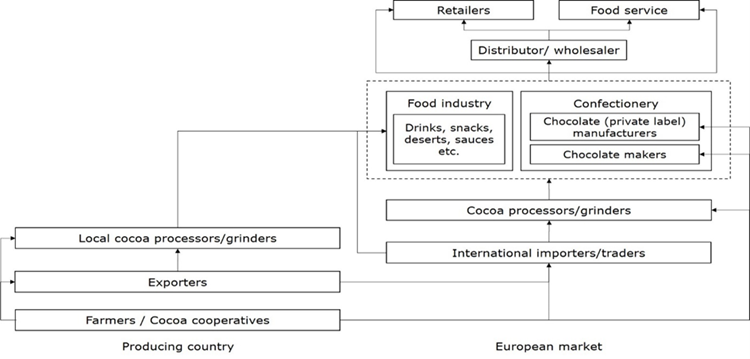
Source: ProFound
Cocoa bean processors/grinders
Large processors/grinders source their cocoa beans directly from producing countries. They process the raw material into cocoa mass, cocoa butter and/or cocoa powder, which they distribute to the confectionery, food, cosmetic and pharmaceutical industries throughout Europe. Some cocoa processors also manufacture end products to supply directly to the retail or food service sector. Examples of cocoa-bean processors/grinders in Switzerland are Barry Callebaut, Lindt & Sprüngli and Nestlé.
For whom is this an interesting channel? If you are an exporter of high volumes of bulk beans, then your direct trading partner is usually a cocoa grinder/processor. These companies tend to buy high volumes of standard qualities. They usually have cocoa buying stations in producing countries to which you can sell your cocoa directly.
Importers
Importers of bulk cocoa normally handle large quantities and have direct contacts with exporters in producing countries. In most cases, importers have long-standing relationships with their suppliers. Importers either sell the cocoa beans to companies in Switzerland or re-export them to other European buyers.
Examples of large importers of cocoa beans and/or cocoa derivatives active in Switzerland are the previously mentioned Barry Callebaut, Lindt & Sprüngli and Nestlé.
Importers active in the speciality segment usually deal with smaller quantities, and often work directly with producers and producer co-operatives. Examples of speciality trading companies in Switzerland are PRONATEC (sources organic and fair-trade cocoa), Minka SCS (sustainable cocoa), Caboz (fairly traded African cocoa), Walter Matter (fair-trade cocoa), Chocolats Halba (fair-trade cocoa) and Stella Bernrain (organic and fair-trade cocoa).
Specialised importers could also be interested in value-added cocoa products processed at the country of origin, as described in our study on the European market for semi-finished cocoa products, or even in finished products like chocolate.
For whom is this an interesting channel? For exporters working with high volumes of bulk beans from producers/co-operatives, large importing companies that engage in cocoa processing activities can serve as a gateway to the Swiss market. If you deal in bulk cocoa, discuss certification possibilities with your buyer.
Farmers or producers’ associations with speciality or certified cocoa can best sell their beans directly to specialised cocoa importers, as many of them prefer to work directly with producers and/or co-operatives and not through exporters.
If you produce or have very high-quality cocoa beans and are working through an importer, it might be interesting to discuss possibilities to link up directly with high-end chocolate makers. This is mainly an opportunity for those with the financial means and technical know-how to organise export activities and to access the market directly.
Large (private label) chocolate manufacturers
The largest industrial chocolate manufacturer worldwide is Barry Callebaut, which also has production and grinding facilities in Switzerland. Other large chocolate manufacturers active on the Swiss market are Camille Bloch, Maestrani, Mars, Mondelez, Nestlé and Lindt & Sprüngli. These companies all have their own importing departments and source their cocoa beans directly from producing countries.
Private label manufacturers may also be an interesting entry point for your cocoa beans. These companies are growing in importance as it becomes more common for large brands to outsource their production to specialised private label manufacturers. Examples of private label manufacturers in Switzerland include the previously mentioned Stella Bernrain, Chocolats Halba and PRONATEC.
For whom is this an interesting channel? Selling to these players is interesting if you have cocoa beans of a standard quality, and available in large volumes. This may also be an interesting channel for local grinders with cocoa mass and cocoa butter which meet high quality standards.
Small chocolate makers
Especially in the speciality and fine-flavour segments, cocoa beans are increasingly being traded directly from farmers (or farmers’ associations and co-operatives) to chocolate makers. Although direct trade is growing, it still represents a very small part of the cocoa market. Not all chocolate makers are able to sustain direct trade and to assume all the responsibilities that are usually outsourced to traders, such as logistics, documentation and pre-financing.
In this sense, direct trade can also happen with an importer as intermediary, who acts as a service provider and contact point in the transactions between the source and the chocolate market. Importers can also guarantee traceability and communicate the story of the cocoa beans accurately along the chain.
Examples of specialised chocolate (bean-to-bar) makers in Switzerland that source speciality cocoa directly from producing countries are Choba, La Flor, Orfeve and Sadé Chocolat.
For whom is this an interesting channel? Targeting speciality chocolate makers directly is recommended for producers and exporters dealing with speciality cocoa beans. This requires financial and technical know-how to organise export activities. You could also consider setting up local processing facilities to add more value to your cocoa beans. Our study on the European market for semi-finished cocoa products discusses this more in depth.
Intermediaries/agents
Agents act as intermediaries between you, cocoa importers and chocolate makers. Some agents are independent, but others are hired to procure cocoa beans on behalf of a company. An agent acts as an intermediary and has the knowledge to evaluate and select interesting buyers for you. Examples of brokers/agents in European countries are H.C.C.O Hanseatic Cocoa & Commodity Office (Germany) and Amius (United Kingdom).
For whom is this an interesting channel? If you have limited experience exporting to European countries, agents can play a very important role. They are also interesting if you lack the financial and logistical resources needed to carry out trade activities. Working with an agent is also useful if you need a trusted and reputable partner within the cocoa sector. Be prepared to pay a commission for their work.
Tips:
- Find buyers in Switzerland who match your business philosophy and export capacities (in terms of quality, volume, certifications). For more tips on finding the right buyer for you, see our study on finding buyers on the European cocoa market.
- Attend trade fairs in Europe to meet potential buyers, such as Biofach (Germany, fair specialised in organic products), Chocoa (the Netherlands) and Salon du Chocolat (France). Attending such events can provide you with additional insight into the preferences of Swiss buyers, with regard to origin, flavour and sustainability certification. By understanding the market better, you can ensure that your specific product corresponds to the demand and requirements.
- Connect to platforms or traders such as Direct Cacao and Cocoanect; they help establish links between farmers and chocolate makers. Read more about direct trade and shorter cocoa chains in our study on trends in the cocoa sector.
- Use industry associations to find potential buyers in Switzerland, such as ChocoSuisse, the Association of Swiss Chocolate Manufactures. Also check the members of the Swiss Platform for Sustainable Cocoa.
- Invest in long-term relationships. Whether you are working through an importer or directly with a chocolate maker, it is important to establish a strategic and sustainable relationship with them. This will help you manage market risks, improve the quality of your product and reach a fair quality/price balance. For more tips, read our study on doing business with European cocoa buyers.
3. What competition do you face on the Swiss cocoa market?
The intensity of rivalry on the market is generally high for bulk cocoa with low added value. This segment is mainly dominated by major suppliers and co-operatives able to deliver large quantities so they can compete on price. It is difficult for small and medium-sized companies to compete with this segment. In the speciality cocoa market, there is more focus on quality, taste, and sustainability. However, this market commands smaller volumes, so rivalry is also becoming increasingly intense.
Ghana is Switzerland’s main supplier of cocoa beans
The largest share of cocoa beans imported by Switzerland was supplied by Ghana, at over 26,000 tonnes in 2021. According to the International Trade Centre, Swiss cocoa-bean imports from Ghana increased in volume at an average annual rate of 2.3% between 2017 and 2021.
Ghana is one of the largest producers of Forastero cocoa beans worldwide. Forastero beans are mainly used in the mainstream market. A large share of cocoa produced in Ghana is Rainforest Alliance/UTZ-certified, which is a market entry requirement to large manufacturers and retailers operating in mainstream markets.
The cocoa supply chain in Ghana is well established, and the Ghanaian government is involved in all facets of it. The national Ghana Cocoa Board (Cocobod) encourages production, processing and the marketing of cocoa beans. It is also the main trader of cocoa beans to international markets, which means that the share of international cocoa traders is fairly low in Ghana.
Examples of cocoa exporters and producers’ organisations from Ghana are ABOCFA and Kuapa Kokoo Co-operative Cocoa Farmers and Marketing Union Limited.
Increasing imports from Ivory Coast
The amount of cocoa beans supplied by Ivory Coast is relatively low, especially when compared to the import figures from other European countries. According to the International Trade Centre, Ivory Coast supplied 3,600 tonnes in 2021. This number has been increasing over the years; between 2017 and 2021, imports by Switzerland from Ivory Coast grew at an average annual rate of 12%.
Like Ghana, Ivory Coast relies on a well-established cocoa supply chain. There is a large presence of multinational processing companies (such as OLAM and Cargill), to which small cocoa producers and co-operatives are closely linked. Also, a large share of the cocoa produced is Rainforest Alliance/UTZ certified.
Examples of cocoa exporters and producers’ organisations from Ivory Coast are ECOOKIM and ECAKOOG.
Latin America is a key supplier of speciality and organic cocoa for the Swiss market
About 37% of Swiss cocoa imports come from Latin America. Countries in this region are known for the high shares of fine-flavour cocoa in their total production, as well as for the production of organic cocoa. The largest Latin American suppliers of cocoa beans to Switzerland are Ecuador, the Dominican Republic and Peru.
Ecuador is the largest producer of fine-flavour cocoa
Ecuador is the second-largest supplier of cocoa beans to Switzerland, and the main one in Latin America. According to the International Trade Centre, Swiss imports from Ecuador amounted to more than 12,500 tonnes of cocoa beans in 2021, corresponding to a share of 24% of total imports. Between 2017 and 2021, Ecuador’s supply grew at an average year-on-year rate of 5.7%.
Ecuador was the fifth-largest cocoa producer in the world in 2020. As the largest source of fine-flavour cocoa, the country is strongly marketing the origin of its beans. ANECACAO, its national association of cocoa exporters, heavily publicises the history of cocoa in Ecuador on its website. It also describes the main varieties produced and the quality requirements that exporters must comply with.
As much as 75% of Ecuador’s cocoa exports are fine-flavour beans. Moreover, the country has distinguished itself in the region as a pioneer in the fight against deforestation and for the development of sustainable agriculture, which also represents an added value for Ecuadorian cocoa.
Examples of successful exporters of cocoa beans from Ecuador include UNOCACE, COFINA, Ecuacoffee SA and Cacaos Finos Ecuatorianos SA.
Dominican Republic is a leading supplier of organic cocoa
Swiss imports from the Dominican Republic have increased significantly in recent years; between 2017 and 2021, they grew at an average rate of 194% per year – from 54 to 4,069 tonnes.
The Dominican Republic has been a major organic cocoa producer for years. In 2020, an estimated 67,000 hectares – more than 44% of the country’s total cocoa farming area – were dedicated to organic cultivation. That makes it the world’s third-largest grower of organic cocoa by area.
A large proportion of organically produced cocoa from the Dominican Republic is also fair-trade certified. One of its main suppliers is the Confederación Nacional de Cacaocultores Dominicanos (CONACADO), a union of cocoa co-operatives that promotes organic and fair-trade certification. Swiss specialist trading company PRONATEC imports large shares of its cocoa from the Dominican Republic, as part of its own project Yacao.
Peru stands out for its production of organic and high-quality cocoa beans
Peru is another fairly large Latin American supplier of cocoa beans to Switzerland. It supplied 2,200 tonnes in 2021, representing 4.3% of total Swiss imports. According to International Trade Centre (ITC), imports from Peru increased significantly between 2017 and 2021, at an average annual rate of almost 24%.
According to data from FAO, Peru ranked as the ninth-largest cocoa producer in 2020. The country produces fine-flavour cocoa, mainly consisting of Trinitrio and Criollo beans. About 75% of Peru’s exports are registered as fine-flavour cocoa. It is also a major producer of organic cocoa. According to FiBL & IFOAM’s The World of Organic Agriculture 2022, Peru grows the world’s second-highest share of organic cocoa by area and is ranked as the EU’s third-largest supplier of organic cocoa beans.
In addition, Peru has managed to strongly promote the quality and unique origin of its cocoa beans. Its national cocoa association, APPCACAO, is a driving force in developing the sector through a co-ordinated nationwide effort by cocoa associations/co-operatives, companies, support organisations and the government.
Examples of Peruvian cocoa exporters are Ecoandino and Norandino.
Large share of Swiss speciality cocoa is sourced from Madagascar
International Trade Centre data shows that Madagascar is the sixth-largest supplier of cocoa beans to Switzerland: 1,500 tonnes in 2021. But these imports decreased at an annual average rate of 12% between 2017 and 2021.
Madagascar is a relatively small cocoa producer, ranking as the world’s twentieth-largest producer worldwide in 2020. Trinitario, Criollo and Forastero cocoa plants all grow on the island, with Trinitario being the main variety. According to ICCO, 100% of exports from Madagascar are fine-flavour cocoa. Madagascan cocoa is much used and highly valued by craft chocolate makers in Europe.
Examples of exporters from Madagascar are SCIM and AFH Export.
Tips:
- Identify your potential competitors. To be successful as an exporter, it is important to learn from them. Focus on their marketing strategies, the product characteristics they highlight and their value addition approaches. Successful companies that already export to the European market from which you can learn include Casa Franceschi (Venezuela), Kokoa Kamili (Tanzania), Hacienda Victoria (Ecuador), Ingemann (Nicaragua) and Xoco Gourmet (Central America, mainly active in Honduras, Guatemala, Belize and Nicaragua). Have a look at their websites to see how they highlight information about their products, such as their cocoa varieties, origin and processing methods.
- Identify and promote your unique selling points. Give detailed information about your cocoa growing region (origin), the varieties, qualities, processing techniques and certification of the cocoa you offer. You can also tell about the history of your organisation, your cocoa growing farm(s) and the passion and dedication of the people working there. These are all elements that make your company unique.
- Actively promote your company on your website and at trade fairs. Flavour quality competitions also provide good opportunities to share your story (example: International Chocolate Awards of the Cocoa of Excellence Programme).
- Read our study on how to do business with European cocoa buyers to find more tips on marketing your cocoa.
- Work together with other cocoa producers and exporters in your region when you lack company size or product volume. Together you can promote good-quality cocoa from your region and be a more attractive and more competitive supplier for the European market.
- Learn more about organic cocoa production in different countries by referring to the World of Organic Agriculture 2022
- Develop long-term partnerships with your buyer. This implies always complying with buyer’s requirements and keeping your promises. This will provide you with a competitive advantage, more knowledge and stability on the Swiss market.
- Check possible programmes to support your crop and its productivity. Refer to your national Ministry of Agriculture and other local programmes. Also check if there are local support programmes in your region from the Food and Agriculture Organization (FAO), International Finance Corporation (IFC), World Agroforestry Centre (ICRAF) and other organisations.
This study was carried out on behalf of CBI by Gustavo Ferro and Lisanne Groothuis of ProFound – Advisers in Development.
Please review our market information disclaimer.
Search
Enter search terms to find market research